IMPORTANT
AMERICAN SEXTANT
C. TABER – NEW BEDFORD Ca
1860
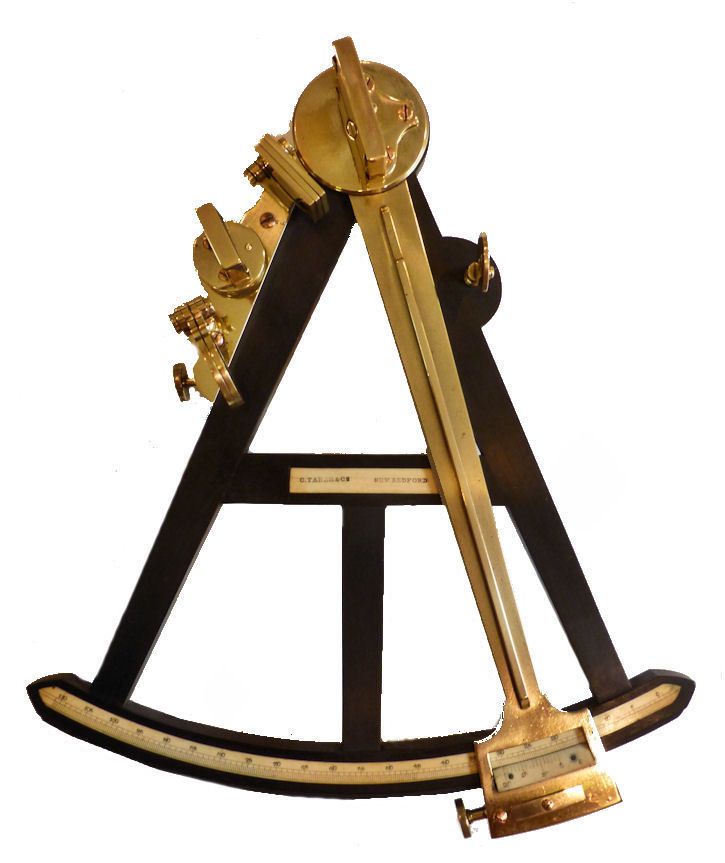 Presented is an ebony frame, ivory arc, and antique sextant made by
Presented is an ebony frame, ivory arc, and antique sextant made byCharles Taber & Co. New Bedford. There were few American makers of navigation instruments, most of which
were imported from England. The Taber company was located in the heart of the whaling industry. There is a lot of New England
history associated with this instrument.
1824, of Mayflower stock, and died in New Bedford in 1887. Taber shipped out on a whaler at 15. After many years at sea, he
became master of his vessel. When gold was discovered in California, Captain Taber sailed around Cape Horn in August 1848.
For a time, he was engaged in the transportation of troops for the U.S. government. Taber was later the captain of a ferry
boat that plied the waters between San Francisco and Sacramento. He returned to
New Bedford continued a career ashore in the instrument business with his brother William, starting in 1849, as
a maker of navigation instruments and the firm also became a printer. The Taber firm was active until the 1880s and went into the art
business. There is a label of Charles R. Sherman, a nautical instrument dealer on the inside cover stamped in red with
C.R. Sherman & Son.
The elder Sherman, at one time, was associated with William C. Taber, Charles’ father, in
the nautical book business. The label reads Charles R. Sherman Nautical, Mathematical and Optical Instruments, Charts, Nautical Books,
Patent logs, Stationery, &c.,
No. 49 North Water Street, New Bedford.
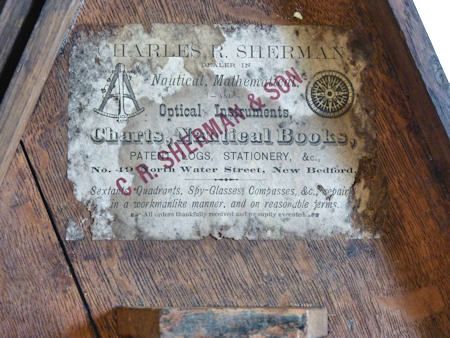 Charles Taber was in business in New Bedford in the mid 19th Century. He is briefly listed in Webster’s Registry of
Charles Taber was in business in New Bedford in the mid 19th Century. He is briefly listed in Webster’s Registry of
Instrument Makers’ Signatures, but Taber had much more extensive operations than Webster’s has
a record of.
THE SEXTANT: This beautifully made instrument has a ribbed brass index arm and measures 12 inches
long on the index arm. The arc measures from – 5 to plus 110 degrees. The ivory plate on a cross bar between the two
limbs is engraved “C. TABER & CO. NEW BEDFORD”. The horizon mirror is on an adjustable turntable and can be rotated. Of
special significance are the rib down the index arm, the tangent screw, the ivory vernier scale, reading from right to
left from 0 to 20 arc minutes, a peep sight, and two sets of sun shades all of which help date the instrument.
There is no provision for a handle on this sextant. All these features indicate it is a transitional piece between an octant
and a sextant which we date as having been made around 1860.
FEATURES CONSIDERED
Sometime after 1780, the addition of a tangent screw, as fitted to this instrument, allowed for fine adjustment
and represents one of the two major changes in the basic operation of the octants and sextants for the next 150
years! The second was the fitting of a second set of shades and a ribbed index arm. And after wards, telescopes and handles were added.
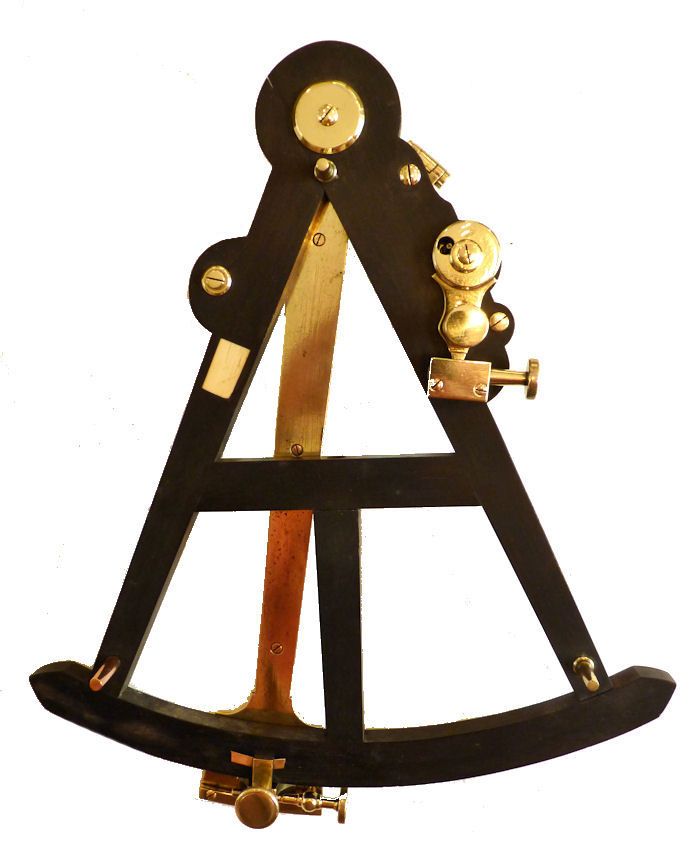
The back of instrument showing machinery and an ivory note
pad
SEXTANT CONDITION:
The sextant has been recently polished and lacquered and is in exceptional condition. The mirrors are
in very good condition considering their age and use. ivory scale is in perfect condition. The engraving is
sharp and distinct. Present is a small ivory notepad on the back, but the ivory pencil cap is missing. The shades are
complete and in good working order. The ebony frame shows as near new. All the original machinery is
present, including a two-hole peep sight.
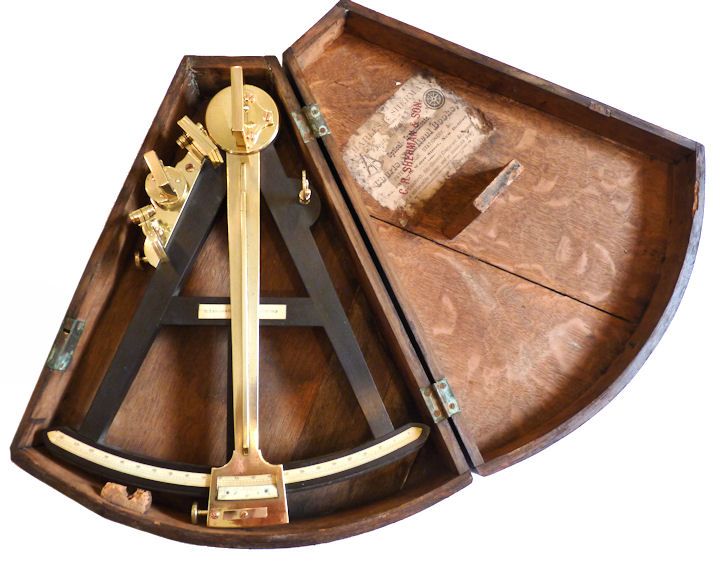
THE CASE:
The “keystone” solid Oak case shows considerable use and has a section of wood recently replaced on its bottom.
It has an age crack on the top, the grain of which has a mottled appearance. There is a lock, but no
key. There is label inside from Charles R. Sherman & Son, New Bedford, an instrument and
charts and nautical book dealer.
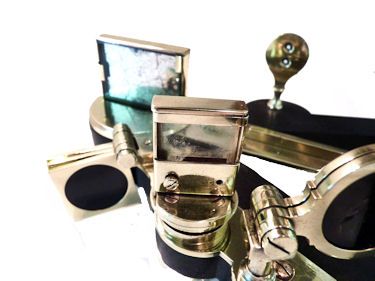
Index mirror in
good
condition
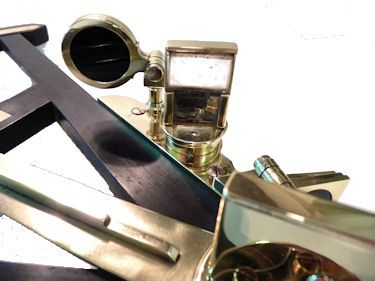 Horizon
Horizon
mirror in good condition
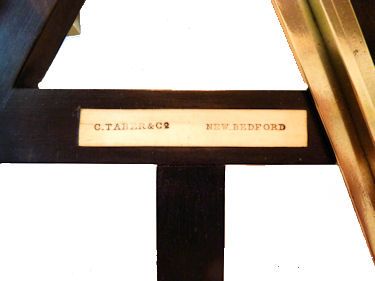
Maker’s
name
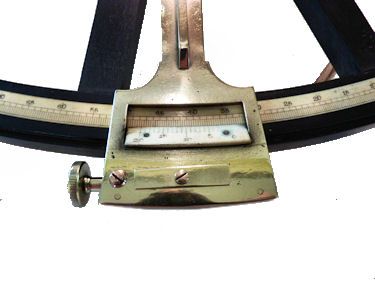
style vernier reading from the right
DIMENSIONS: Length of Index Arm 12 15/16″
Radius of Index Arm 11 3/4″
Width of frame at arc 11″ Index mirror 42 x 32 mm Horizon mirror 32 x 25 mm
Weight sextant 2 Lbs 9 oz
